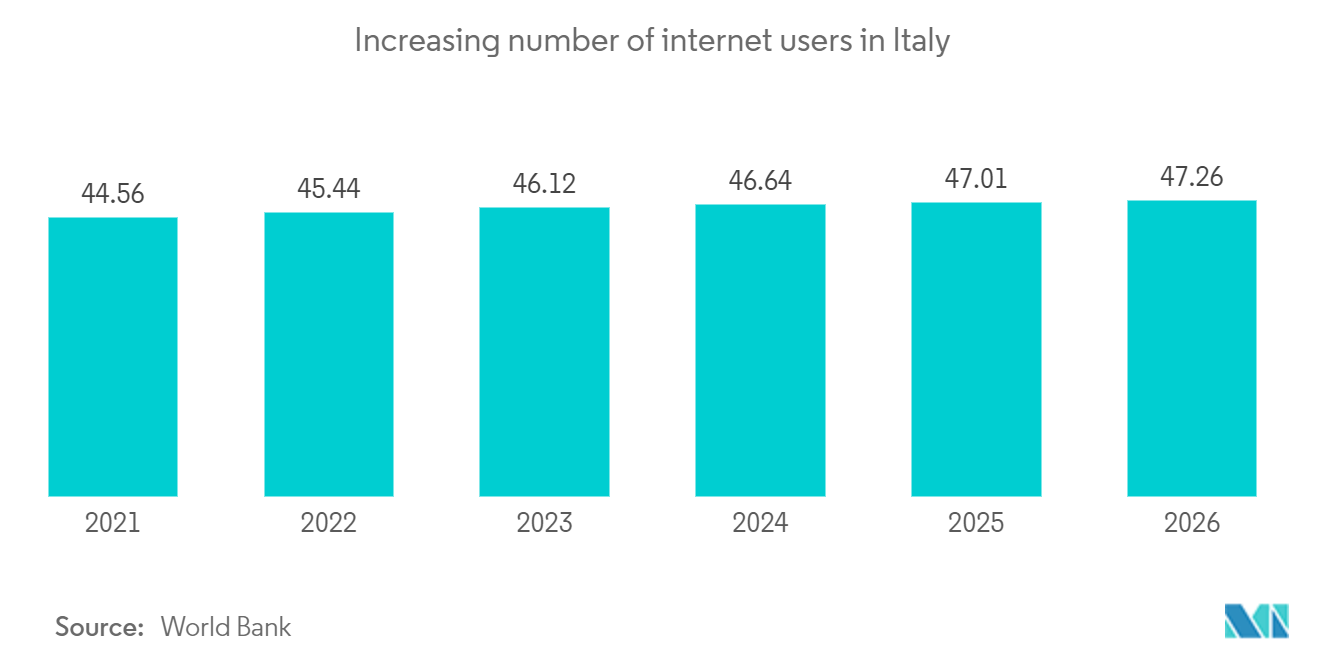Market Trends of Italy E-commerce Industry
Technological advancements
- The number of Italian online shoppers is growing by 2020; online sales in Italy account for 8% of total retail sales. As Internet access infrastructure improves and broadband connection availability expands, mobile devices are increasingly used for sales, accounting for roughly 40% of all digital sales. Furthermore, the country has 61 million people, with 19 million shopping online.
- Italy's economy is prosperous, with one of the world's largest GDPs. Italy's government revenues increased to 64.87 billion EUR in September 2021, up from 46.50 billion EUR in August 2021. Luxury goods sales are also significant in this country, as Armani, Gucci, and Prada are all located there. Previously, the fashion industry dominated the country. However, Electronics & Media is now the largest segment in the Italian e-market, accounting for 29 % of e-commerce revenue in Italy.
- At the beginning of 2021, mobile phones were almost as popular as laptops or desktop computers for accessing the internet, while tablets accounted for only 2% of total web traffic. Making video calls and using services like Facetime to stay in touch with friends and loved ones appeared to be the most popular activity among Italian smartphone internet users. Chat and messenger apps were among the country's most popular types of apps, with a 94.4 % reach as of the third quarter of 2020.
- Every day, 2 million new users on average sign up for social media, which impacts e-commerce because consumers are now more likely to purchase through social media. In particular, many brands and marketplaces have integrated their e-commerce platforms with social media so customers can easily connect to their online stores. Roughly 41 million people use social media in Italy, accounting for 68 %.
- COVID-19 outbreaks around the world drove consumers to unprecedented levels of online activity. By May 2020, e-Commerce transactions had reached $82.5 billion, a 77 % increase from the previous year. Using traditional year-over-year increases would have taken four to six years to get that figure. Consumers have moved online to make purchases they would typically make in stores, such as food and household items, clothing, and entertainment. Many customers say they will continue to shop online until a COVID-19 vaccine becomes available.


